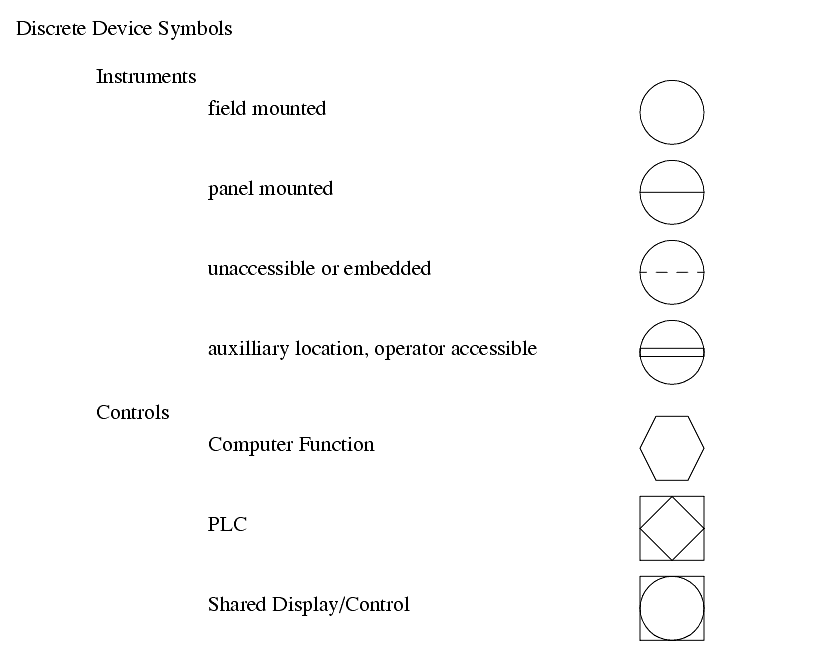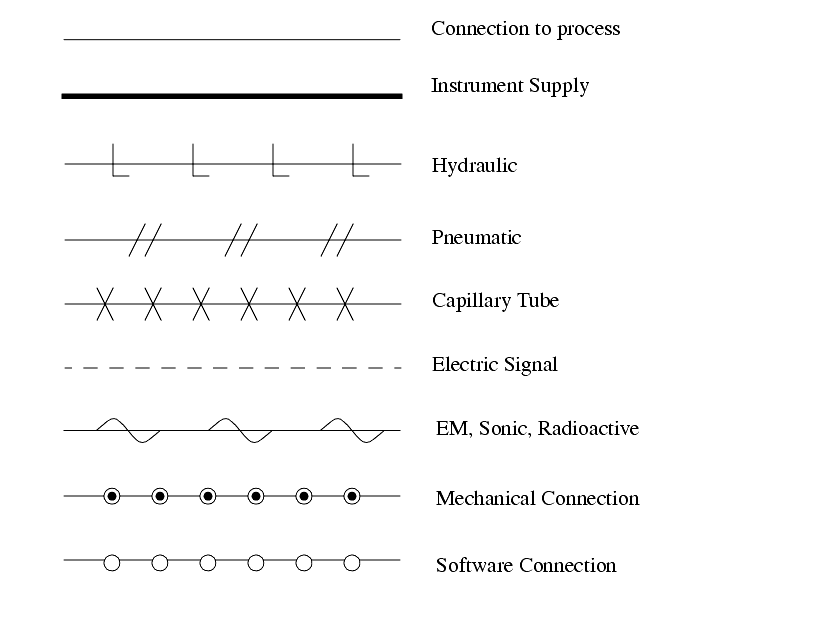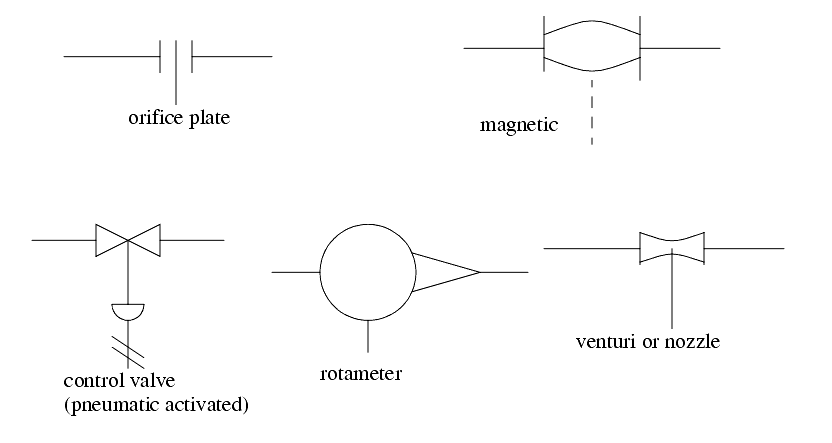31.3 PROCESS MODELING
������������
There are many process modeling techniques, but only a few are suited to process control. The ANSI/ISA-S5.1-1984 Piping and Instrumentation Diagram (P&ID) standard provides good tools for documenting processes. The symbols used on the diagrams are shown in Figure 451. Note that the modifier used for the instruments can be applied to other discrete devices.
Figure 451 Symbols for Functions and Instruments
The process model is carefully labeled to indicate the function of each of the function on the diagram. Table 2 shows a list of the different instrumentation letter codes.
Table 3: ANSI/ISA-S5.1-1984 Instrumentation Symbols and Identification
| LETTER |
FIRST LETTER |
SECOND LETTER |
| A |
Analysis |
Alarm |
| B |
Burner, Combustion |
User's Choice |
| C |
User's Choice |
Control |
| D |
User's Choice |
|
| E |
Voltage |
Sensor (Primary Element) |
| F |
Flow Rate |
|
| G |
User's Choice |
Glass (Sight Tube) |
| H |
Hand (Manually Initiated) |
|
| I |
Current (Electric) |
Indicate |
| J |
Power |
|
| K |
Time or Time Schedule |
Control Station |
| L |
Level |
Light (pilot) |
| M |
User's Choice |
|
| N |
User's Choice |
User's Choice |
| O |
User's Choice |
Orifice, Restriction |
| P |
Pressure, Vacuum |
Point (Test Connection) |
| Q |
Quantity |
|
| R |
Radiation |
Record or Print |
| S |
Speed or Frequency |
Switch |
| T |
Temperature |
Transmit |
| U |
Multivariable |
Multifunction |
| V |
Vibration, Mechanical Analysis |
Valve, Damper, Louver |
| W |
Weight, Force |
Well |
| X |
Unclassified |
Unclassified |
| Y |
Event, State or Presence |
Relay, Compute |
| Z |
Position, Dimension |
Driver, Actuator, Unclassified |
The line symbols also describe the type of flow. Figure 452 shows a few of the popular flow lines.
Figure 452 Flow Line Symbols and Types
Figure 453 shows some of the more popular sensor and actuator symbols.
Figure 453 Sensor and Actuator Symbols and Types


